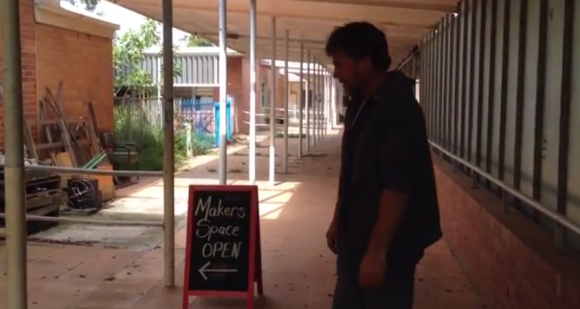The battle between Tesla Motors, which sells its electric cars directly to buyers over the Internet, and the nation’s auto dealers–who want to make that practice illegal–is now in its fifth year.
And for the very first time, the dealers’ national trade organization has embarked on a charm offensive to make its case directly to the public.
With a website and various marketing activities, the National Auto Dealers Association (NADA) highlights the many benefits it suggests auto dealers offer to car buyers, their local communities, and the industry at large.
The campaign, entitled Get The Facts, is intended to “inform the media, opinion leaders and consumers about the numerous benefits of America’s franchised new-car dealer network.”
While Tesla and its direct-sales model are never mentioned, the campaign echoes themes that dealer lobbyists made been making for years.
Some of those themes were articulated by Tim Jackson, president of the Colorado Automobile Dealer Association, in an interview with Green Car Reports almost two years ago, in which he explained why it was in the car buyer’s own interest that his group had gotten legislation passed in 2010 to prevent Tesla from opening any further stores in his state.
The centerpiece of the NADA campaign is a friendly two-and-a-half-minute animated video (viewable below) called “A Good Deal For All.” It asks the question, “Will dismantling the car-buying experience help consumers or hurt them?”
The initiative appears to be aimed at women; the car buyer is referred to as “she” throughout the video. That may be a smart choice, as women are often the decision-makers on what car is ultimately bought by families that are headed by a man and a woman.
The cartoon dealerships are shown in a friendly green, while the automakers are represented by grim black factories with multiple smokestacks.
NADA’s video makes several points about the benefits it believes local dealerships offer.
Among them are price competition, consumer safety during vehicle recalls, after-sale support and service even if a manufacturer pulls out of the market, local jobs and tax revenue, and simple convenience.
Competing on price
First, the NADA video notes that consumers benefit by having a wide array of pricing information available, and being able to shop among competing dealers to get the best price.
“Some want to let automakers bypass dealerships, eliminating competition,” it warns.
“A distant corporate office indifferent to local markets would set prices–prices you can’t negotiate,” it says.
“Some call this ‘factory-direct, implying that so-called ‘middleman costs’ would be eliminated. That’s a myth that’s just plain wrong.”
It names costs like showrooms, lots, test drives, trade-ins, inspections, titling and registration, and the staff to do it all. (The profit earned by each local dealership is omitted.)
Automakers would have to absorb those costs–for which, the video suggests, buyers will still pay–but without the benefit of dealers trying to undercut each other on price.
Nonetheless, NADA itself indicates that car buyers only visit an average of 1.5 dealers today–against five dealers about a decade ago–due to the benefits of online research, as noted by Ward’s Auto. Completing the transaction and buying the car itself, however, cannot be done online.

Hurting consumer safety?
Then, there’s safety–obviously a hot topic amidst the current GM ignition-switch recall fiasco.
“Bypassing dealerships would also hurt consumer safety,” NADA suggests. “Since factories pay dealers to perform warranties and recall work, dealers are incentivized to service their customers’ vehicles.
“Automakers don’t have this incentive; for them, warranties and recalls mean more costs,” it says.
That may be the most inflammatory point in the video. Automakers–from GM to Tesla, and the rest too–would likely take severe exception to the idea that it’s only dealerships that are preventing them from killing or injuring their buyers.
Indeed, it’s not at all clear that dealerships played any significant advocacy role in the decade-old GM ignition-switch safety debacle. Although if they did, that might well be a good example for NADA to use in support of its assertion.
Makers depart, dealers remain
Third, “even if manufacturers stop doing business, like Saab, Suzuki, or Fisker, dealers are still there for that work–giving extra accountability for the process.”
That one, unfortunately, may not be shared by 1,000 or more Fisker buyers–many of whose dealers took down their signs and closed up shop mere months after selling them their $106,000 range-extended electric luxury sedan.
And ask your local Saab or Suzuki owner how good their service is–in the case of Suzuki, only two years after it announced it would exit the U.S. market.
Local jobs and tax revenue
The fourth point is that dealerships generate lots of local jobs and, consequently, tax revenue.
The video doesn’t explain why service managers, technicians, car detailers, drivers, and all the rest wouldn’t simply be employed at company-owned stores.
(The implied concern over support for community activities like fire departments, softball teams, charity drives, and other local events is likely quite valid indeed.)
Finally, the video winds up by saying dealers just make the car-buying process more convenient–taking on the “complex process” of arranging loans, managing legal paperwork, and getting the car taxed, registered, and titled for delivery.
We’d love to see a test of the total time required to buy a Tesla Model S online and arrange financing versus the process for doing the same at a local dealership.

Simple language changes
The last four years of skirmishes between Tesla’s online sales model and dealer lobbying in state legislatures has produced mixed results.
In some states–New Jersey being the latest–bills favorable to auto dealers, sometimes tacked on as amendments to bills addressing entirely unrelated issues, have been publicized by Tesla or its advocates.
That has often provided a level of transparency and awareness to such legislation that it may not have had.
Given that the bills often address the arcane state rules under which franchises are granted and administered, banning Tesla from a state can be as simple as removing a few words from one or two sentences of legislative legalese.
As the Colorado Auto Dealers Association wrote in its 2010 End of Session report:
An existing provision in Colorado law already prevented a manufacturer from operating a dealership so long as they were not [sic] franchised dealerships. This statue [sic] narrows provision [sic] so a manufacturer that has any dealerships in Colorado, whether franchised or not, is prohibited from operating a dealership.
In other words, the original intent of such laws–to protect franchised dealers who had invested in their businesses over many years or decades from being undercut by the automakers they had to rely on for cars–had been considerably broadened to forbid any carmaker to sell a vehicle to a retail buyer under any circumstances.
Outlook varied
Most Americans today remain seemingly ignorant of the fact that in most states, it’s illegal for GM or Toyota to sell them a car. But dealers’ anti-Tesla efforts have clearly raised at least some awareness of the issue.
So perhaps NADA’s PR campaign may be just the first step of an escalating battle for the hearts and minds of American car buyers.
And depending on how fond you are of your local dealer–more specifically, how well you were treated the last time you bought a car or had it serviced–your reactions to the video may vary radically from those of your neighbor.
Which is why the outlook remains uncertain in the state-by-state battle, and likely will continue that way for some time yet.
Meanwhile, at least some buyers in states that ban Tesla direct sales will continue to find workarounds to get the luxury electric cars.
Dealer forecast: Mixed, with some clouds on the horizon.
This story originally appeared on Green Car Reports.

Tesla's goal is to accelerate the world's transition to electric mobility with a full range of increasingly affordable electric cars. Palo Alto, California-based Tesla designs and manufactures EVs and EV powertrain components. Tesla ha... read more »







 While the most common use for a Raspberry Pi is probably a media center PC or retro game emulator, the Pi was designed as an educational computer meant to be an easy-to-use system in the hands of millions of students. Team 28 at Imperial College London certainly living up to the Raspberry Pi Foundation’s expectations
While the most common use for a Raspberry Pi is probably a media center PC or retro game emulator, the Pi was designed as an educational computer meant to be an easy-to-use system in the hands of millions of students. Team 28 at Imperial College London certainly living up to the Raspberry Pi Foundation’s expectations  Hey, did you know
Hey, did you know 






